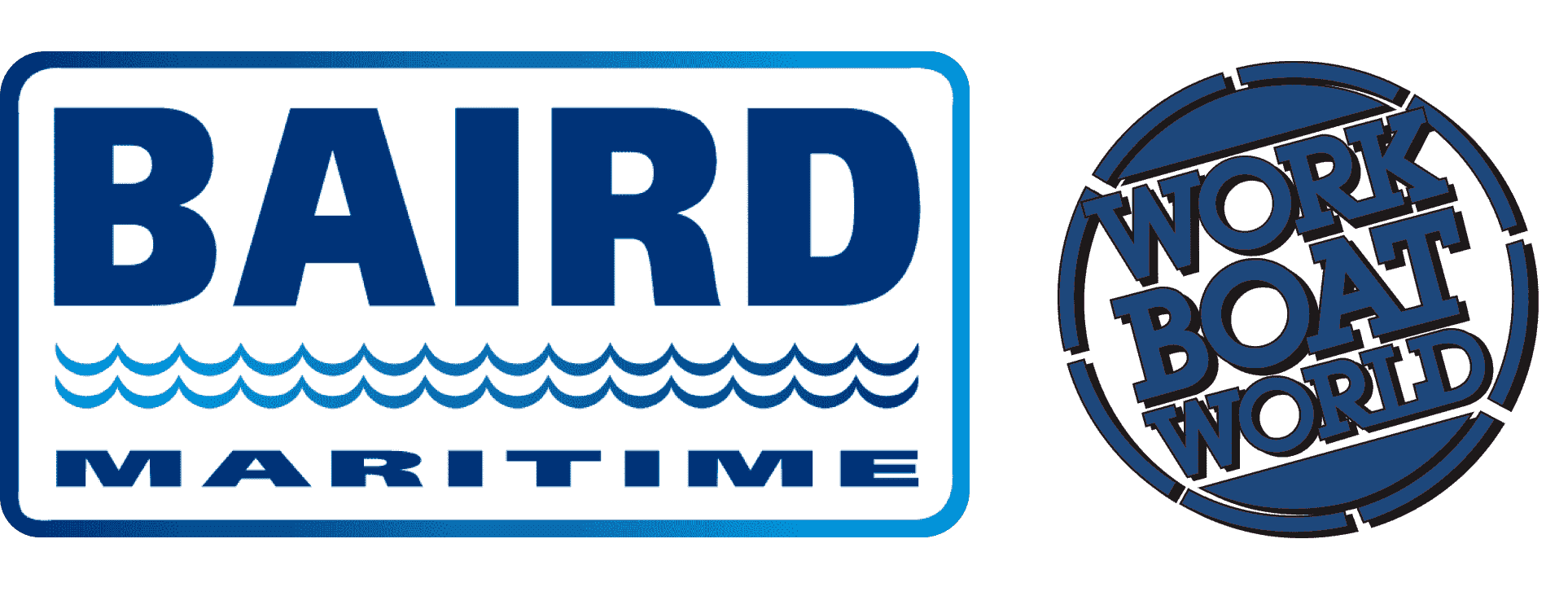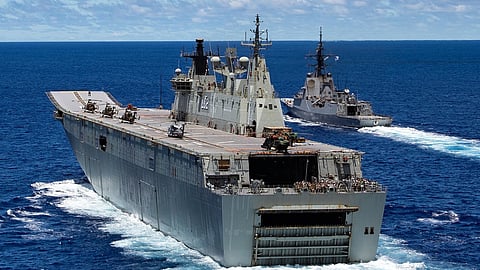OPINION | Trouble in the navy's material world is trouble for Australia's security – and AUKUS
The Royal Australian Navy is systematically failing to manage and maintain the two largest ships in its fleet – the 27,000 tonne LHD amphibious ships HMAS Canberra and HMAS Adelaide. The scale of the troubles is laid out in a 108-page national audit office report, with almost every page revealing deeper levels of problems and dysfunction.
The problems aren’t restricted to this part of the navy’s fleet. They have sobering implications for the whole defence institution and for its capacity to manage AUKUS.
These amphibious ships’ problems have been growing and compounding since 2014, when Defence accepted the two ships from the builder, BAE Systems.
Over the last ten years, Defence has shifted contractual responsibility between various companies and also moved responsibilities and authorities around inside its own bureaucracy. The results of all this shuffling and turbulence have been overwhelmingly poor.
Total power failures on the big ships have happened while they were deployed on urgent disaster relief tasks twice – in Tonga in 2022 and Vanuatu in 2023. The poor material state of the ships has meant navy chiefs were advised that there was between a 97 and 99 per cent chance of a system failure in a number of "mission critical systems" during deployment of the ships.
Maintenance has been systematically deferred because of funding pressures, skills shortages, tasks left incomplete and the need to send the ships off somewhere. The backlogs are creating a bow wave of work and expense over the remaining years of the ships’ naval service.
Budgets cash crunch means worse is ahead
More broadly, the navy’s sustainment of its entire surface fleet is experiencing a cash crunch with budget pressures across Defence growing as the AUKUS and Hunter-class frigate demands for cash accelerate.
The navy estimated its urgent sustainment funding shortfall at AU$500 million (US$300 million) over FY 2024-25 and FY 2025-26 and received a boost of AU$300 million (US$200 million), leaving it AU$200 million (US$130 million) short over two years. The funding crunch no doubt continues beyond this time despite government protestations it’s funding the capabilities we need.
Flaws in the ships from the time they were constructed by BAE Systems have persisted, with remedial work incomplete when BAE was released by Defence from further contractual liabilities from the acquisition phase years after the ships were accepted into service. BAE promised in-kind contributions instead.
Defence’s oversight and management of the AU$180 million (US$120 million) annual budget for the ships has been deeply flawed for over a decade and shows no signs of improvement. That’s got to be disturbing for taxpayers, because it looks like we’ll be putting AU$1.9 billion (US$1.2 billion) into the sustainment of these two ships over the period to 2033-34 according to Defence plans, and that’s likely to not be enough.
The processes Defence does have to manage the ships and the major contractors doing most of the work are complex, overlapping but partial. They are also disjointed and have not worked. Risks at the strategic level are managed in isolation of risks at the operational and technical levels.
No surprise, as there is no clear line of sight between the risks in Defence’s high level sustainment framework for the ships and those being managed day to day.
This is not all able to be laid at the feet of the Chief of Navy, because the byzantine organisational structures and overlapping roles of Defence’s now enormous senior leadership structure – military and public servant – mean no one is in control.
I think the Chief of Navy should be responsible and accountable for the state of the navy fleet and they should have sufficient authority to give effect to those responsibilities.
That can only happen with a radical simplification of the current Defence structure, starting with stripping back its top heavy senior leadership to something coherent, where a much smaller number of senior jobs have their responsibilities and authorities aligned to outcomes in the real world.
And Defence has failed to provide mandatory periodic reporting on the material state of key systems our military uses, including the amphibious ships, to its Ministers for two years.
According to Defence, this was because they were busy developing the Defence Strategic Review and they informed the Minister "in conversations". Not a great way to run a multi-billion dollar enterprise.
I have read many ANAO reports but this one is so tightly packed with descriptions of failures and shortfalls affecting the safety and effectiveness of our navy’s biggest ships that it is exceptional in a long line of insightful reports. Only the ANAO’s 2023 report on the Hunter frigate scandal comes close in my memory.
The audit’s most damning section is a short one. It’s "Appendix 2: Improvements observed by the ANAO" (grammatically correct as it did find two):
“During the course of the audit the ANAO observed Defence update navy’s materiel sustainment agreement (MSA) with the capability acquisition and sustainment group and establish an interim MSA with the Naval Shipbuilding and Sustainment Group.”
That’s it, set against 100 pages of disarray.
A benchmark for actual disclosure and improvement
Without the ANAO, we would hear nothing about these long standing, persistent deep institutional problems and the poor use of billions of dollars of scarce taxpayer money by Defence and the companies it has contracted to sustain the ships under its authority and oversight.
Instead, we would have the responsible ministers expressing their full confidence in the professionalism and competence of senior Defence leadership and claiming they can provide no information because of operational or security concerns. A sprinkling of claims of commercial in confidence matters would close the information tap completely.
So the ANAO report shows what the public can know when a government organisation understands its obligation to inform the public about its work and is not focused mainly on avoiding embarrassment by revealing shortcomings. Instead, disclosure means problems can be addressed and prevented.
It sets a standard for disclosure that Defence can – and should be required by its ministers – to meet.
This article is reposted here with the permission of Strategic Analysis Australia.


